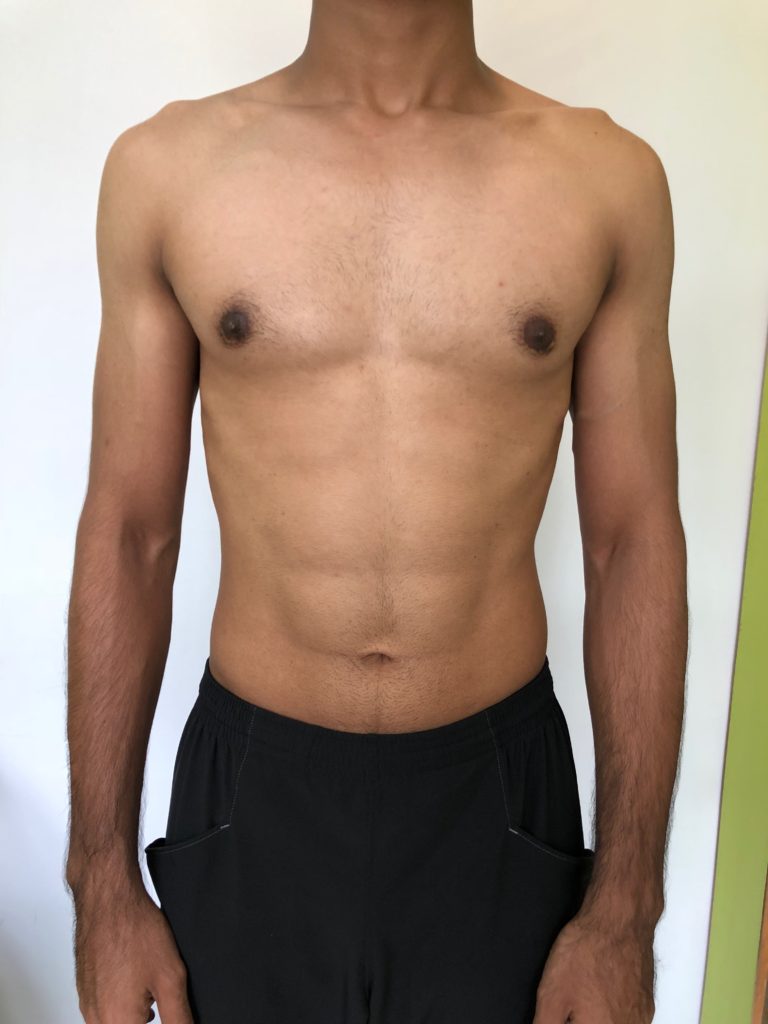Before one embarks upon gynecomastia surgery, both the surgeon and the patient should have an idea about what an ideal male chest actually is. This makes sure everyone is clear what a male breast reduction surgery will achieve. Patients must understand not every man can have the “ideal” chest. Various conditions such as aging, excess body weight, poor skin quality, and unfavorable shape and anatomy affect what is obtainable.

The first thing that one should understand is that the “ideal” chest is not flat. There is a defined contour, a slight bulge, and a natural fold just below the chest where the abdomen begins. The chest fold is predominately horizontal. This horizontal line tends to round out and increases with the varying degrees of gynecomastia.
On the “ideal” chest, the nipple is typically 5-6 cm above the chest fold and faces forward. But this differs according to the built of the patient and the race. The areola is flush with the surrounding skin. With certain types of gynecomastia, the areola will protrude forward creating what is called “puffy nipple.”
If you look at many male chests above, you will notice approximately a couple of cms of fat underneath even in the “ideal” chests. Since this is a natural part of the chest, it is not wise to completely remove all of the fat during surgery. Lastly, take a look at the contour of the pectoralis major muscle in relation to the chest fold. This is the big muscle that gives the chest muscular shape.
The “ideal” male chest may have some breast tissue located directly below the areola. You can feel it by squeezing the tissue under the areola. It is firm, glandular tissue, where fatty tissue is soft and squishy. This amount of breast tissue shown is considered to be normal. Gynecomastia is an excess of this normal breast tissue.


 WhatsApp us
WhatsApp us